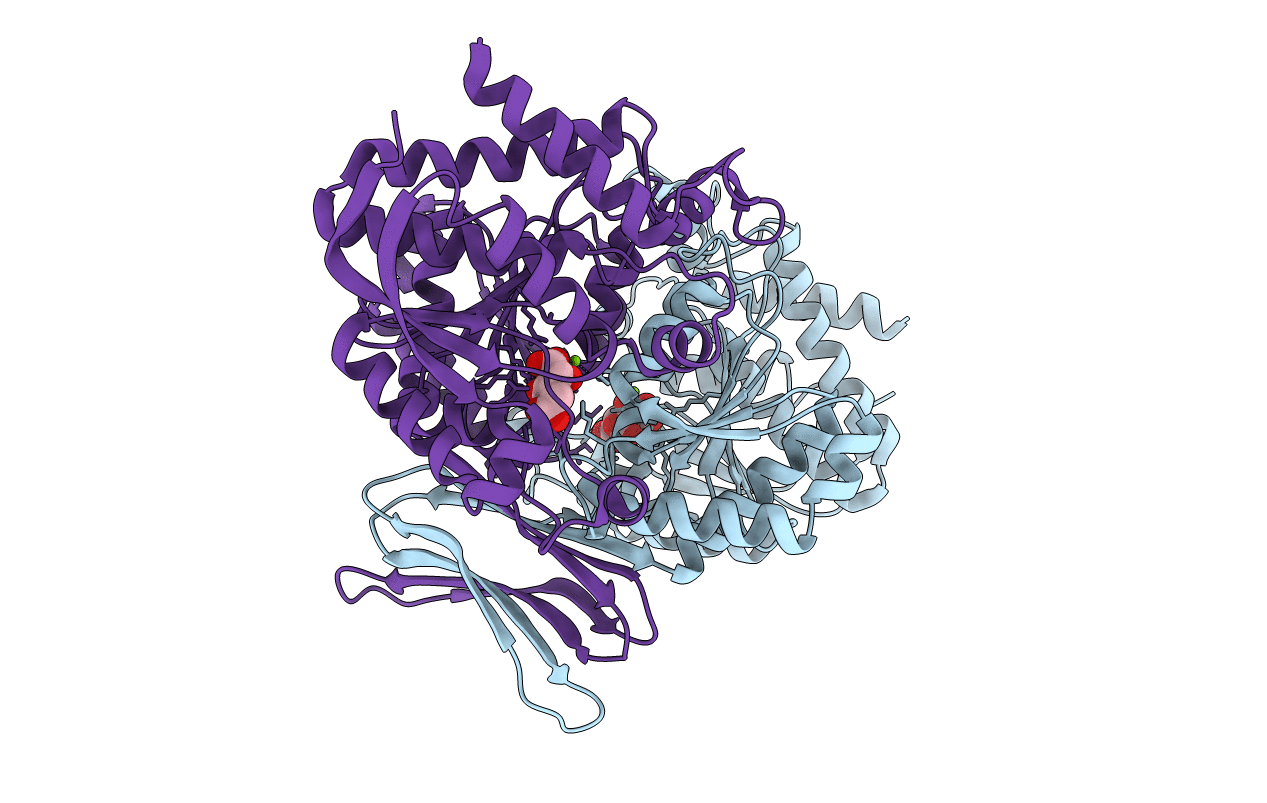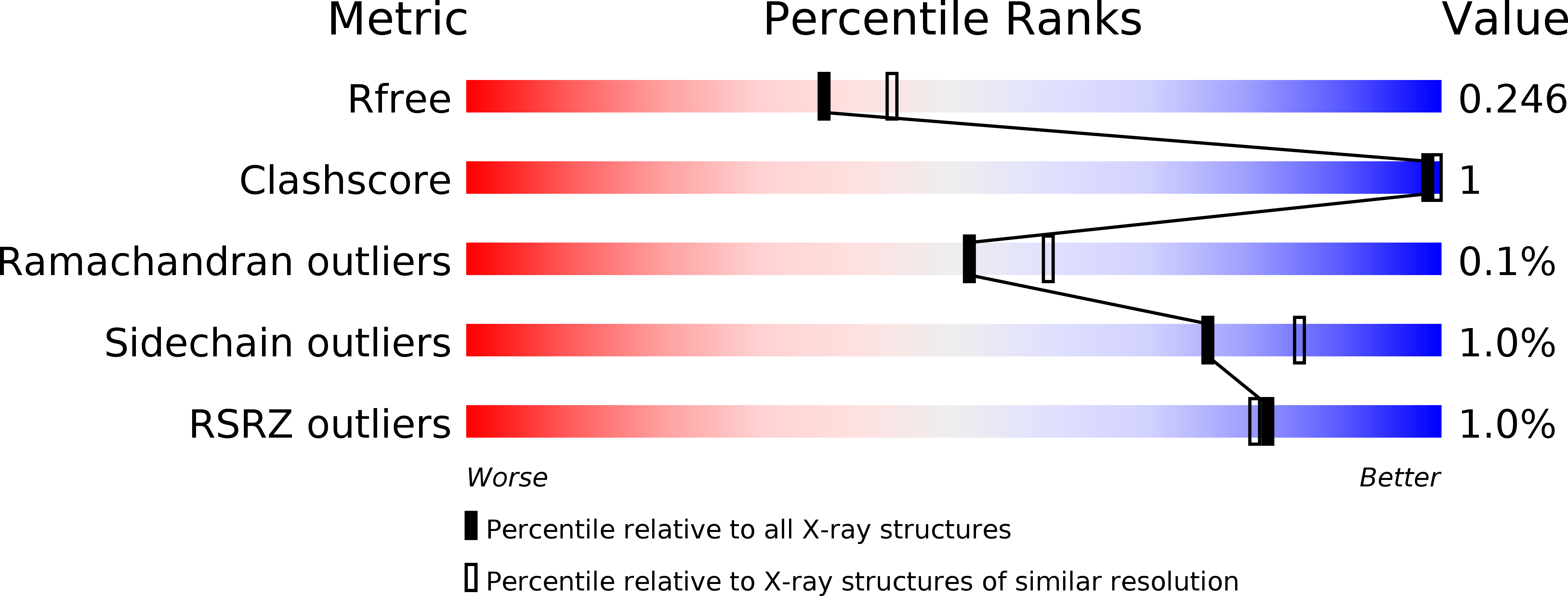
Deposition Date
2016-10-23
Release Date
2017-08-30
Last Version Date
2023-11-08
Entry Detail
PDB ID:
5H3E
Keywords:
Title:
Crystal structure of mouse isocitrate dehydrogenases 2 K256Q mutant complexed with isocitrate
Biological Source:
Source Organism:
Mus musculus (Taxon ID: 10090)
Host Organism:
Method Details:
Experimental Method:
Resolution:
2.21 Å
R-Value Free:
0.24
R-Value Work:
0.20
R-Value Observed:
0.21
Space Group:
P 32


